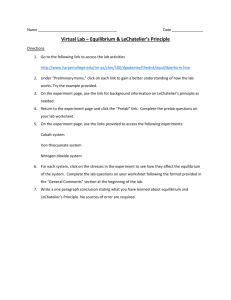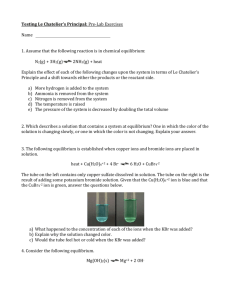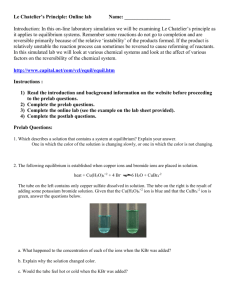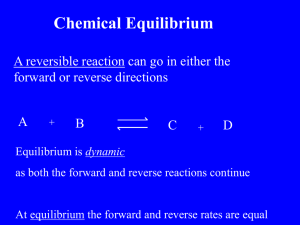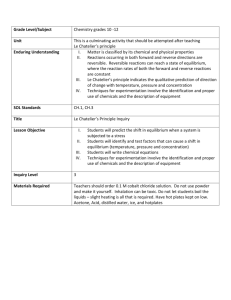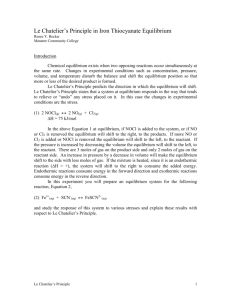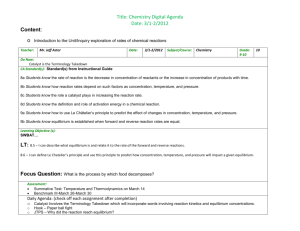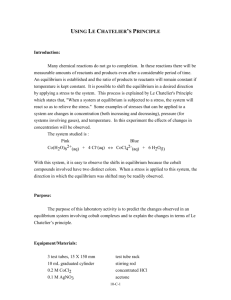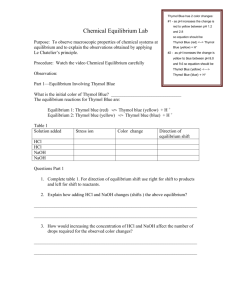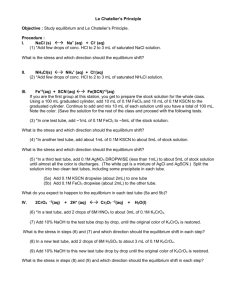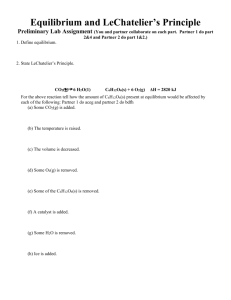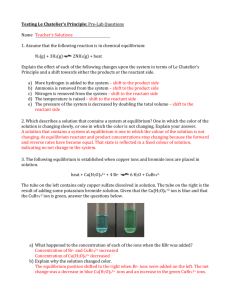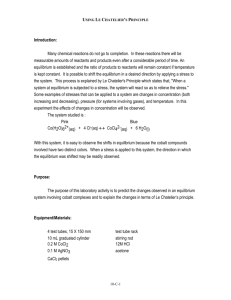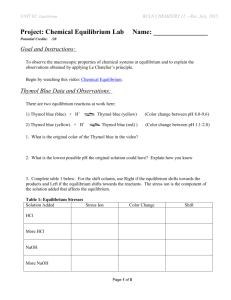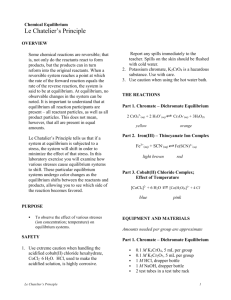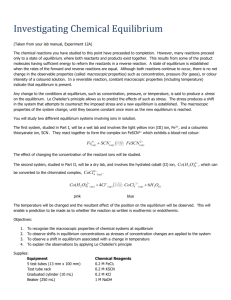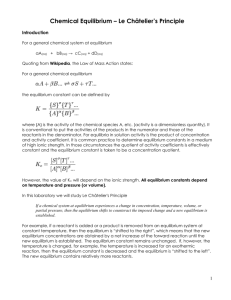Chem project_012112_pre and post lab questions_edit
advertisement
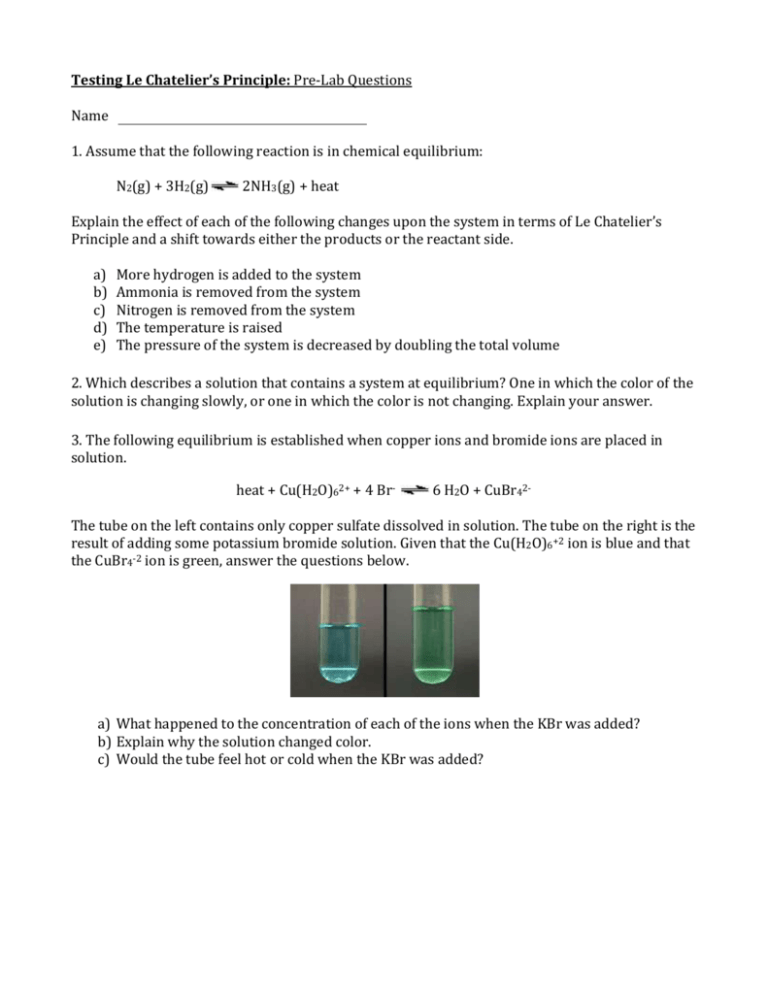
Testing Le Chatelier’s Principle: Pre-Lab Questions Name 1. Assume that the following reaction is in chemical equilibrium: N2(g) + 3H2(g) 2NH3(g) + heat Explain the effect of each of the following changes upon the system in terms of Le Chatelier’s Principle and a shift towards either the products or the reactant side. a) b) c) d) e) More hydrogen is added to the system Ammonia is removed from the system Nitrogen is removed from the system The temperature is raised The pressure of the system is decreased by doubling the total volume 2. Which describes a solution that contains a system at equilibrium? One in which the color of the solution is changing slowly, or one in which the color is not changing. Explain your answer. 3. The following equilibrium is established when copper ions and bromide ions are placed in solution. heat + Cu(H2O)62+ + 4 Br- 6 H2O + CuBr42- The tube on the left contains only copper sulfate dissolved in solution. The tube on the right is the result of adding some potassium bromide solution. Given that the Cu(H2O)6+2 ion is blue and that the CuBr4-2 ion is green, answer the questions below. a) What happened to the concentration of each of the ions when the KBr was added? b) Explain why the solution changed color. c) Would the tube feel hot or cold when the KBr was added? 4. Consider the following equilibrium. Cu2+ + 4 NH3 Cu(NH3)42+ The copper ion in solution is light blue. The Cu(NH3)42+ ion is a deep blue. The tube on the left contains only copper ions. Identify what chemical was added to produce the results shown in the center tube. Identify what chemical may have been added to the center tube to produce the results shown in the right tube. Testing Le Chatelier’s Principle: Post-Lab Questions Name 1. Rewrite both chemical equations. Under each reactant or product write its characteristics such as colour. 2. In the first reaction, which direction did the equilibrium shift? What was the visual indication of this shift? 3. In the second reaction, which direction did the equilibrium shift? What was the visual indication of this shift? 4. Use Le Chatelier’s principle to explain the colour changes in each experiment. 5. The barium ion is toxic to humans. However, barium sulfate is commonly used as an image enhancer for gastrointestinal x-rays. What does this imply about the position of the equilibrium shown below. BaSO4 Ba2+ + SO426. Hemoglobin (Hb) and oxygen gas form a complex (HbO2) that carries oxygen throughout the human body. Unfortunately, carbon monoxide also binds to hemoglobin so that equilibrium is established. Carbon monoxide poisoning occurs when the concentration of HbO2 in the blood is reduced. HbO2 + CO HbCO + O2 The first aid for a person suffering from carbon monoxide poisoning is to (1) remove them to an area of fresh air, and (2) administer oxygen. Using the principles of equilibrium, explain how each of these helps to restore the HbO2 concentration. 7. Methanol has the formula CH3OH and can be produced by the reaction of carbon monoxide with hydrogen gas. CO + 2 H2 CH3OH + heat In an attempt to maximize the yield of methanol (amount of methanol produced), a chemist would try to shift the equilibrium as far to the right as possible. Which of the following would accomplish this? Explain. a) Heating the mixture b) Adding an excess of carbon monoxide c) Removing the methanol as it is formed d) Adding a substance that reacts with carbon monoxide
